
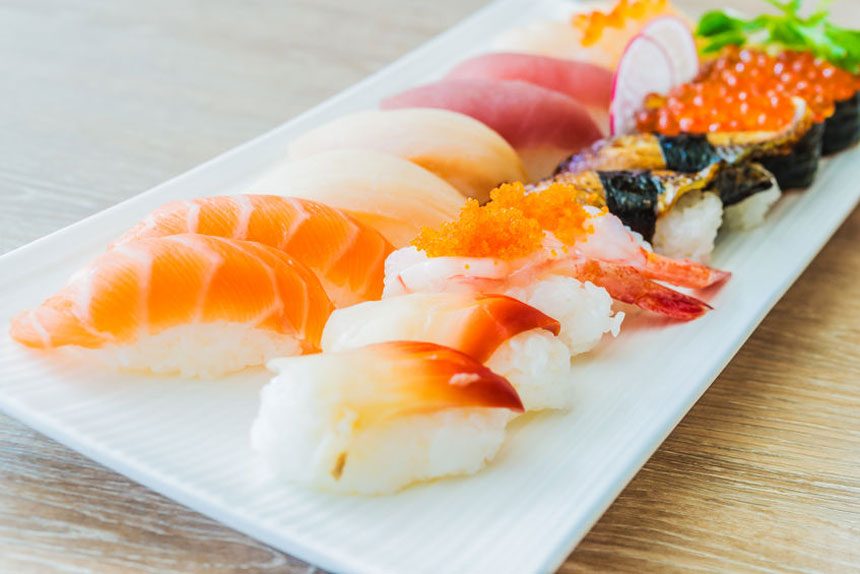 Image credit: siraphol
Image credit: sirapholFact of life: you can’t be a real foodie and not dream of flying to Tokyo for a full-fledged Japanese food fest – even for just a day.
As far as dreaming goes, you might as well shoot for the stars and aim for a week at least because, seriously, there is so much food to eat, so many restaurants, food markets, and street food stalls to try.
That’s on top of all the beautiful landmarks to see – the wonderful juxtaposition of ancient and modern sights.
Ancient Japanese cuisine didn’t have meat – mostly only rice, soup, veggies, and an eclectic collection of raw and cooked fish recipes.
Since the Japanese know their way around fish all too well, that idea doesn’t sound too terrifying. Chances are high that if you even went on a strict seafood diet on your trip to Tokyo, you wouldn’t even miss meat.
If you’re a serious meat lover though, you don’t have to worry because there’s been meat in Japan since the late 1800’s – and Japanese meat dishes are just glorious.
Enjoy this guide to the best food in Tokyo and the best places to get them.
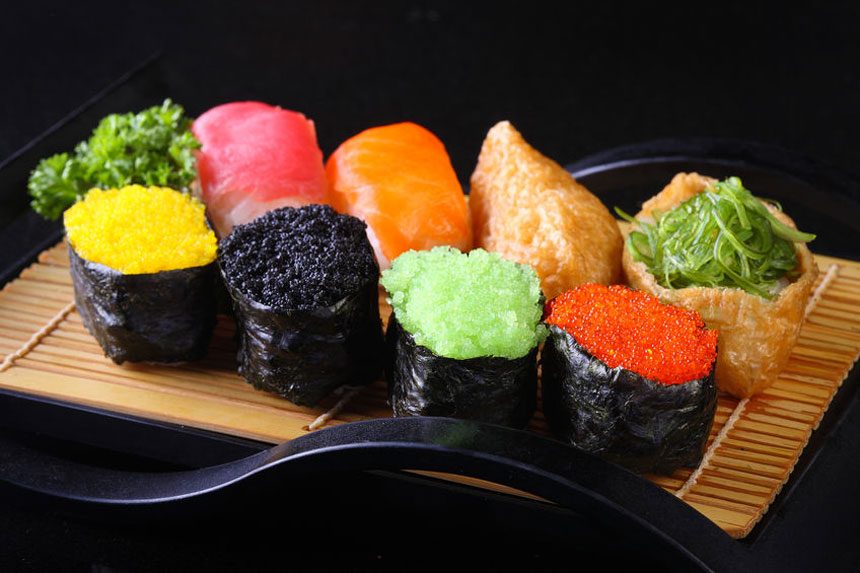 Image credit: nantarpats
Image credit: nantarpats Sushi is that kind of food that you either really love or hate, there’s no neutral ground when it comes to sushi.
If you belong to the first group, you’re probably in the best spirits preparing for your trip to the Land of the Freshest Sushi.
If you belong to the second group, it’s probably because you don’t fancy the idea of raw fish slithering in your throat and therefore, you’re missing half of your life.
There are hundred kinds of sushi! Here’s the secret to a perfect sushi – for sure you’re thinking of the freshest fish or meat but that’s only partly true – the real secret lies in the vinegar used to flavor the rice.
Here are the best places to have sushi in Tokyo.
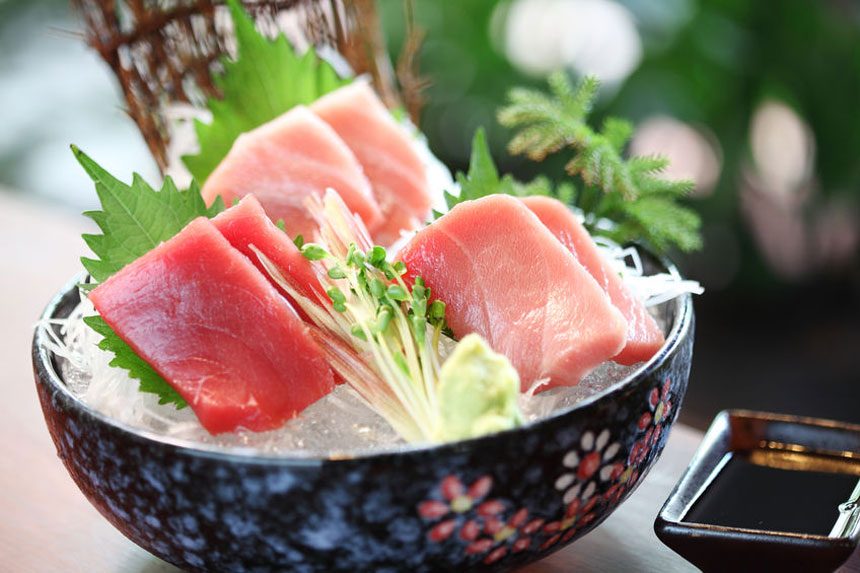 Image credit: seksanwangjaisuk
Image credit: seksanwangjaisukSashimi, in its very essence, seems like a simple dish to prepare. It is, after all, a mere slice of raw seafood or meat. However, there is much complexity involved in its preparation.
The perfect sashimi starts with the freshest ingredient and followed closely by the delicate manner it is sliced. Simple as it sounds, only the highly trained sashimi chefs – or itamae – can serve the most excellent sashimi.
A good piece of sashimi can be eaten on its own but you can choose to smear it with a bit of wasabi and dip it in soy sauce. To enjoy the freshness of your sashimi, inhale its aroma before you take it all in.
Here are the best places to have sashimi in Tokyo.
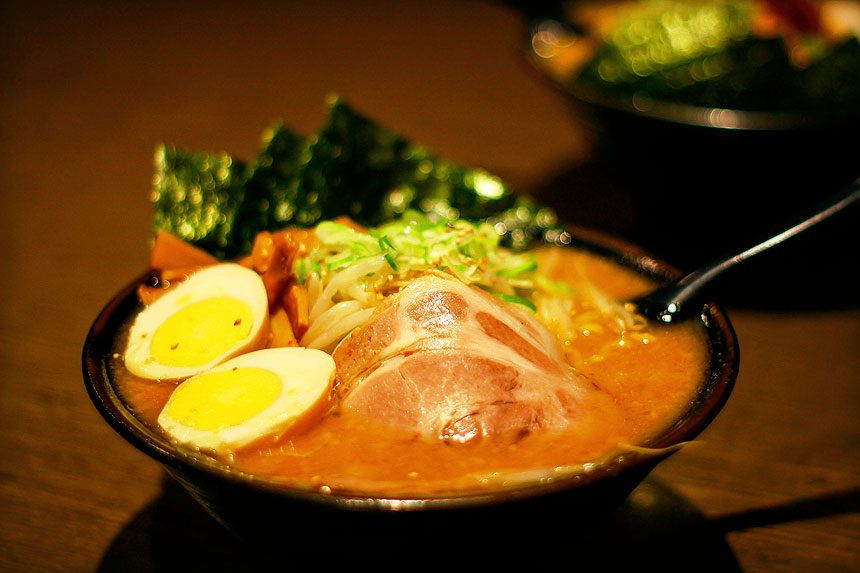 Image credit: George Alexander Ishida Newman
Image credit: George Alexander Ishida NewmanRamen’s place in the foodie world has reached cult status, along the ranks of bacon, pizza and doughnuts.
The power of social media is partly credited, but serious props go to the comforting warmth of flavorful broth, al dente noodles, and all other ingredients incorporated into it.
It’s easy to find “good” instant ramen just about anywhere but there’s nothing like an authentic ramen experience in Tokyo – where ramen preparation is a sacred part of its culinary culture.
The broth is the base that glues all the elements together. For really flavorful ramen, Japanese cooks simmer their broth for 24-48 hours – and it’s always worth the wait.
Here are the best places to have ramen in Tokyo.
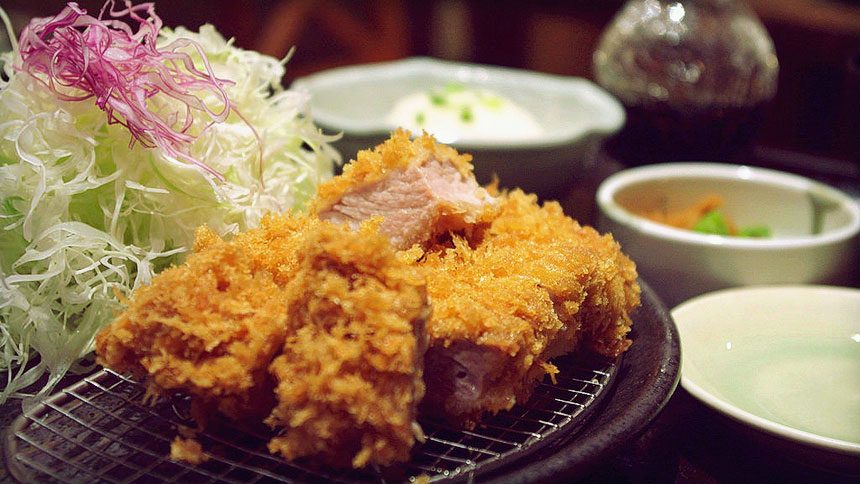 Image credit: Matt@PEK
Image credit: Matt@PEK Basically, tonkatsu is pork cutlet wrapped in panko breadcrumbs and then deep fried. Sounds like your typical breaded pork chop, right? Wrong. There’s nothing typical about authentic tonkatsu.
First, you bite into crispy, golden panko crust revealing a succulent pork cutlet hiding inside, then you wonder how something deep-fried can be so juicy and not at all greasy. While deep in thought, your attention is caught by the sesame seeds that you have to pound with the accompanying mortar and pestle to release a nutty fragrance that adds another dimension to your tonkatsu. You’re caught up in that glorious moment so you forget about the sides of cabbage, rice, and miso soup.
True story.
Here are the best places to have tonkatsu in Tokyo.
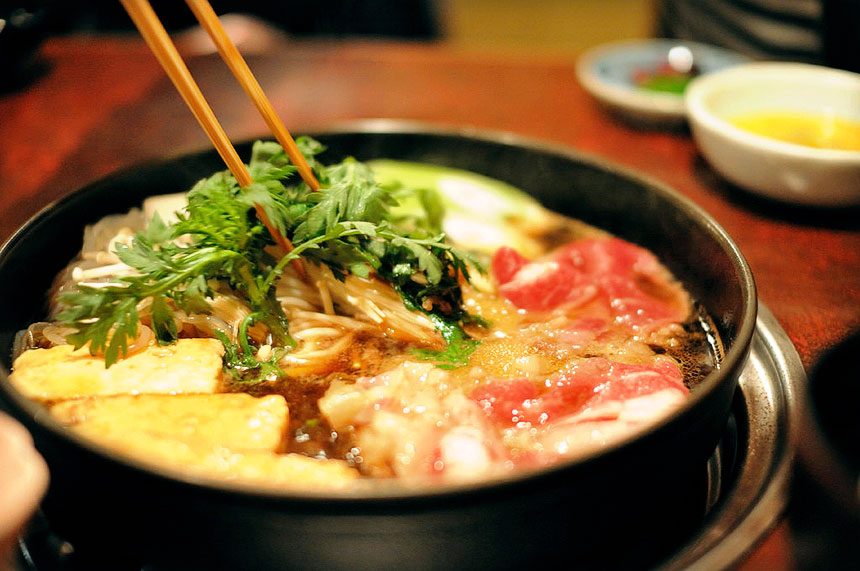 Image credit: ajari
Image credit: ajariSukiyaki is perfect for when you visit Tokyo in its cold winter months – bold-flavored warm broth, crisp vegetables and thin strips of beef.
Sukiyaki preparation varies in different parts of Japan. In Tokyo, the broth is prepared by mixing mirin, brown sugar, soy sauce, and sake. All the other ingredients are then stewed in the sweet-salty broth. Traditionally, beef is dipped in raw egg, which – absurd as it may sound – intensifies the flavor of the beef.
Sukiyaki is more than just a gustatory experience; it is distinctly Japanese culinary artistry served in a beautiful, steaming bowl. For a total sukiyaki experience, go to a restaurant where kimono-clad locals prepare the dish just for you.
Here are the best places to have sukiyaki in Tokyo.
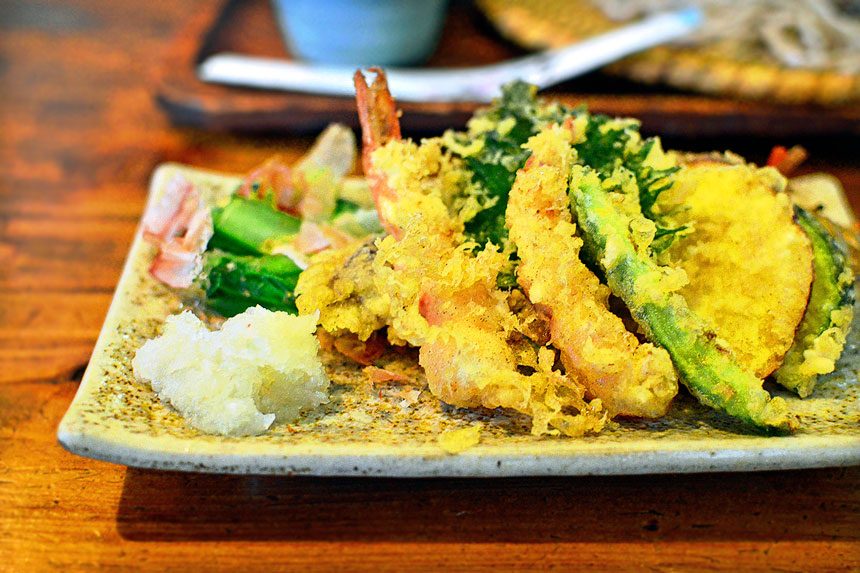 Image credit: Toshihiro Gamo
Image credit: Toshihiro Gamo Japan’s famous golden, deep-fried and lightly breaded seafood and vegetables trace its roots back to the 16th century when the Portuguese Catholic Church abstained from meat. In fact, the word “tempura” is not actually Japanese but was derived from the Latin word “tempora”, which is loosely translated as “day of fasting”.
The perfect tempura is the collective result of several factors: size of vegetable/seafood, temperature and consistency of batter, and temperature and kind of oil. Tempura perfection, of course, is what you can find in every corner of Tokyo.
Expect to fill your belly with different kinds of tempura such as shrimp, crabstick, eggplant, shiitake mushroom, squash, and sweetfish. Don’t forget about the dip – a masterful blend of dashi, soy sauce, mirin, and grated ginger.
Here are the best places to have tempura in Tokyo.
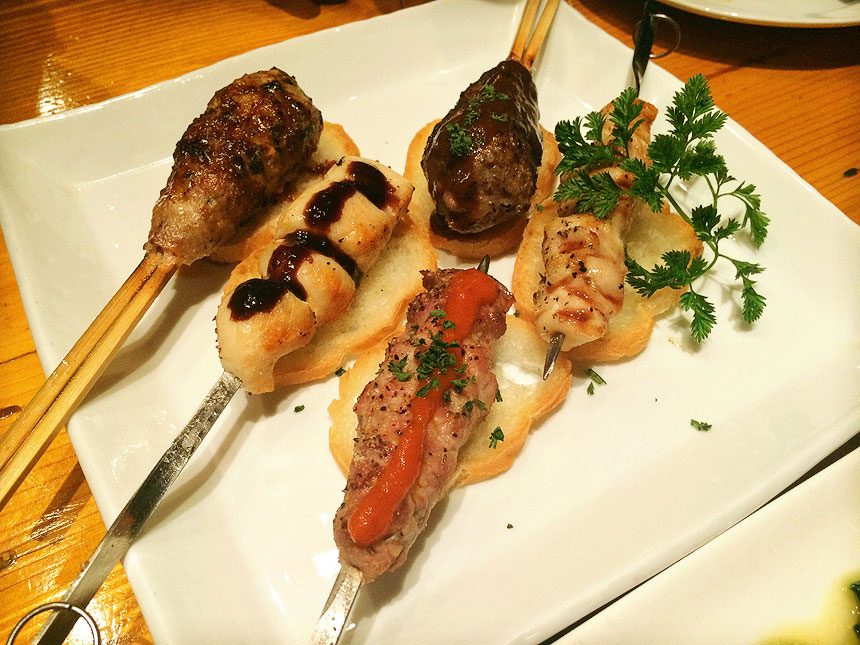 Image credit: toyohara
Image credit: toyoharaLike most Japanese food, kushiyaki has a funny ring to it, and it’s practically hard to imagine what it exactly is. To describe it in a way most of us understand, kushiyaki is skewered meat, fish and/or vegetable that is grilled to delicious perfection then often glazed with a sweet-savory sauce.
Kushiyaki is easy to get by in Tokyo. You can find it in pubs, on the streets, and it’s also a common fare at festivals, something that must not be missed when in the city.
It matches well with a shot of sake and happy talks with friends, but even without either, it’s easy to consume sticks after sticks of kushiyaki.
Here are the best places to have kushiyaki in Tokyo.
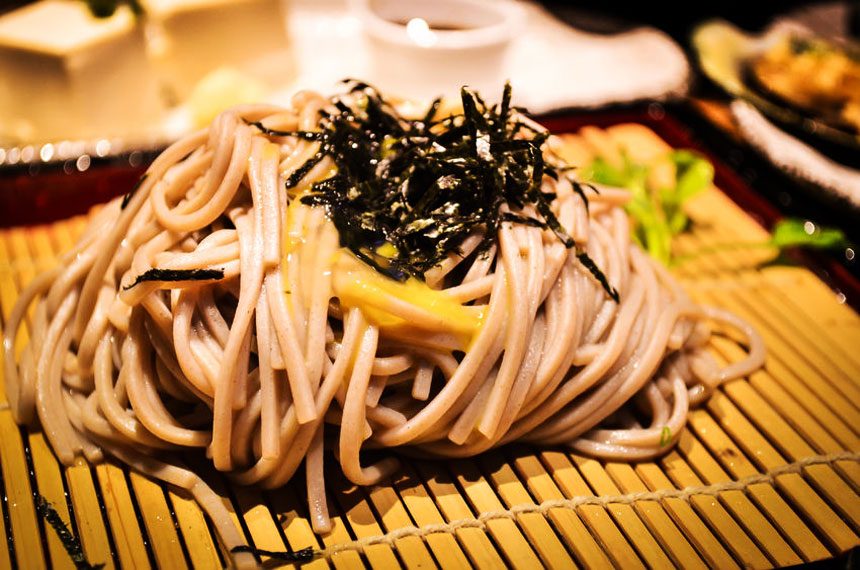 Image credit: stawb3rry
Image credit: stawb3rryThere is a curious way to eating soba, also known as buckwheat noodles. Soba is served either chilled with dipping sauce or in hot broth – chicken or fish broth. If you’re used to ramen and other kinds of noodle soup, you might find it weird to be eating cold noodles, but it is a must-try.
What makes soba unique is that the noodles actually impart flavor to the broth. As a cold dish, the buckwheat flavor complements the dip, which is usually of a sesame base.
There are several ways of soba preparation as there are several ways to enjoy it too – quick and slurpy or ceremoniously but still slurpy.
Here are the best places to have soba noodles in Tokyo.
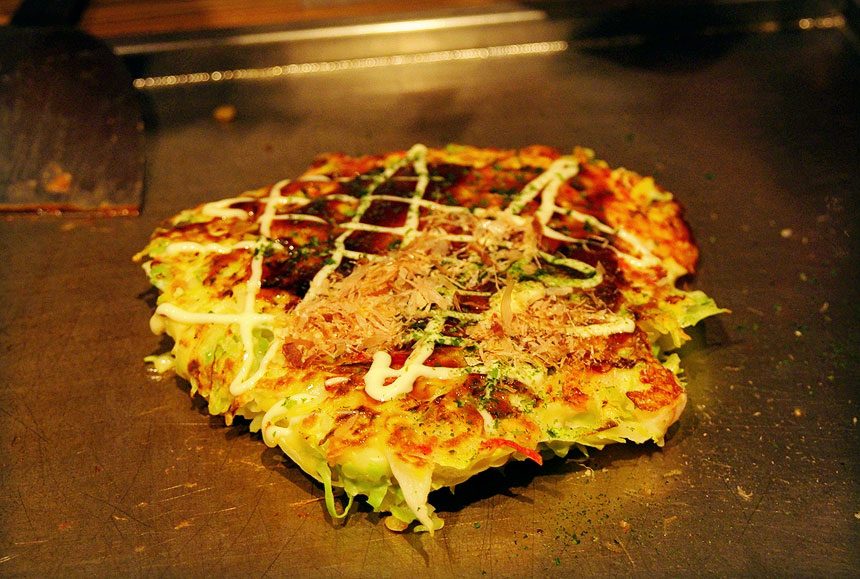 Image credit: Simon
Image credit: SimonOkonomiyaki is a mouthful to say and an even bigger mouthful to explain. Is it a Japanese pancake? Is it a Japanese pizza? But then, “okonomiyaki”, when loosely translated, means “grilled as you like it”. So, what in the actual heavens is okonomiyaki?
Imagine a pancake that is comprised of mouthwatering layers: a layer of batter, of cabbage, and of meat (usually strips of pork belly) or seafood. Interspersed in those layers are green onions, and on top is a thick okonomiyaki sauce sometimes adorned with grated cheese and bonito flakes. The layers are grilled as you would grill a burger patty. The end result? A filling and nutritious snack that is hard to find elsewhere.
Here are the best places to have okonomiyaki in Tokyo.
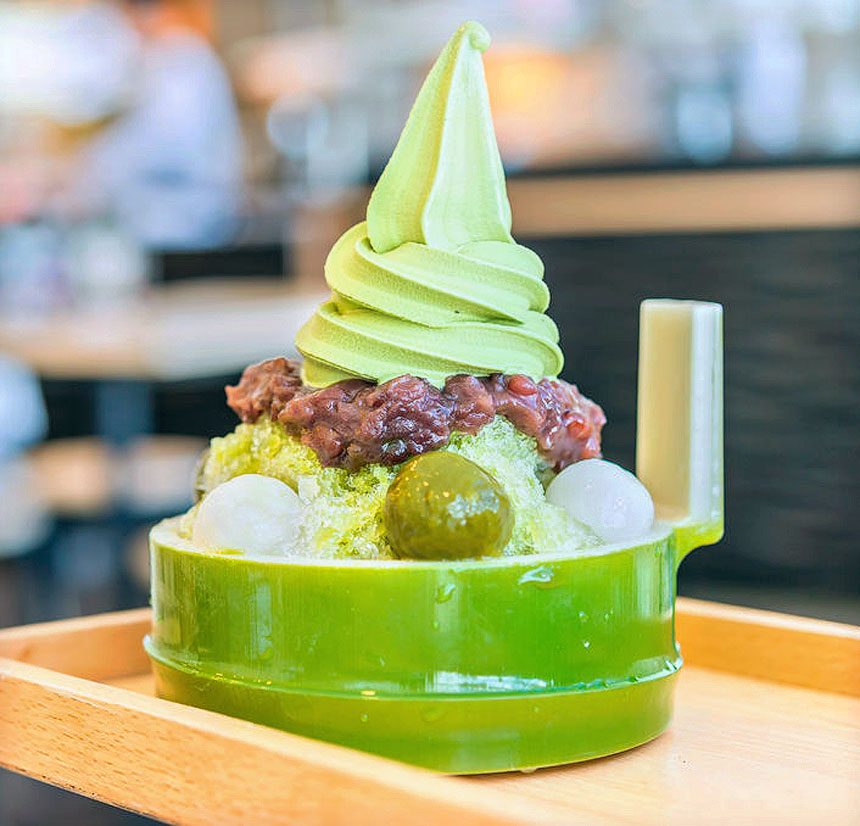 Image credit: siraphol
Image credit: siraphol It doesn’t come as a surprise that serious foodies fly all the way to Japan just to sample authentic matcha desserts. Japan, after all, is the birthplace of matcha – one of the hottest dessert trends in the foodiesphere. It’s amazing how that green tea powder can be transformed into many kinds of desserts, but leave it to the Japanese to figure it out.
If you’ve never tried matcha, you should know that it’s an acquired taste. You are hit by a strange grass-y flavor which evolves beautifully into a distinctly subtle sweetness. There is a wealth of selection of matcha desserts in Tokyo such as ice cream, cream puffs, croissants and mousse.
Here are the best places to have matcha desserts in Tokyo.